75 years ago, on January 20th, 1942, in the grand villa at 56–58 Am Großen Wannsee, situated on the shore of Berlin’s Lake Wannsee, there convened a conference of fifteen senior Nazi civil servants, SS officers, and party representatives.
Following the war, a record of the meeting’s minutes was discovered by the staff of the American prosecutor as they were collecting information for the Nuremberg trials. According to the report, which has come to be known as the “Wannsee Protocol,” the meeting was organized by SS Lt. Col. Adolf Eichmann and chaired by SS-Obergruppenführer Reinhard Heydrich, the Gestapo chief and head of the SS Security Service. Heydrich reported that “the Reich marshal had delegated to him the preparations for the final solution of the Jewish question in Europe and that this discussion had been called for the purpose of clarifying fundamental questions…to ensure in advance that the central organizations involved be brought together and their policies properly coordinated.”
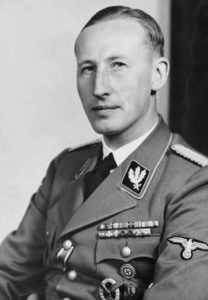
From the Nazis’ point of view, the gathering was a success. By day’s end, the protocols had tallied the population of European Jews remaining in Axis, occupied, neutral, and enemy Europe; developed a taxonomy delineating “half” and “quarter” Jews from “full Jews”; addressed concerns for how to deal with Jews married to Gentiles, their children, and the war-decorated Jew; and had identified methods for the coordinated mass evacuation of all Jews to the East. The aim of all this was “to cleanse German living space of Jews.”
The Protocols are, of course, wrapped in euphemism; but history renders the linguistic opacity plain. Among the best books on the subject is Mark Rosen’s The Wannsee Conference and the Final Solution: A Reconsideration. Rosen points out that “despite using the language of evacuation, the minutes unmistakably contain a plan for genocide.” Validating this, the Protocols are, in particular instances, more transparent. Emphasizing that in the “course of the final solution” the “Jews should be put to work…constructing roads,” the report recognizes that “doubtless the large majority will be eliminated by natural causes.” It further affirms that “any final remnant that survives will doubtless consist of the most resistant elements. They will have to be dealt with appropriately” lest “by natural selection, they would form the germ cell of a new Jewish revival.” In the minutes, Rosen avers, such horrors were “formulated in sober bureaucratic language, deliberated in a civilized surroundings in a once cosmopolitan suburb of Berlin.” Such is the species of malevolence C.S. Lewis had anticipated in the preface to The Screwtape Letters:
The greatest evil is not now done in those sordid “dens of crime” that Dickens loved to paint. It is not done even in concentration camps and labour camps. In those we see the final result. But it is conceived and ordered (moved, seconded, carried, and minuted) in clean, carpeted, warmed, and well-lighted offices, by quiet men with white collars and cut fingernails and smooth-shaven cheeks who do not need to raise their voice.
But Rosen notes that while the Wannsee conference was clearly an effort to codify the liquidation of European Jewry, it is not necessarily so clear as to why, precisely, such a meeting was necessary. Despite Nuremberg prosecutors believing they had found the “Rosetta Stone of Nazi murder”—that precise moment and manner in which the Nazis decided to annihilate the Jews—this, many historians argue, cannot be the case. Rosen explains:
For one thing, Hitler was not at the conference, and those present were too junior to decide on genocide. Above all, the timing seems wrong. The mass murder of Soviet Jews had begun half a year earlier. Polish Jews had been gassed at Chelmno since early December 1941. The Belzec extermination camp was in the midst of construction.
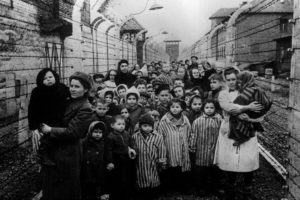
Was the meeting’s significance simply to bear witness and widen the sphere of knowledge and complicity to matters already decided elsewhere long ago? Perhaps yes, but, if so, to a purpose. That purpose, Rosen suggests, might be found in the innovative character of Nazis culture, which fostered the marbling together of “control and improvisations.” In reading the literature surrounding the Final Solution and the development of its constituent elements—such as a facility like the Auschwitz-Birkenau camp complex—one sees a continuing series of top-down directives supplemented and put-into-practice by bottom-up initiatives.
To cite but one case, when the commandant of Auschwitz, SS Lt. Col Rudolf Höss, was away from the camp, his deputy, SS Capt. Karl Fritzsch, took the opportunity to experiment with Zyklon B, an insecticide composed of crystalized cyanide used to eradicate infestations of insects around the camp. As Laurence Rees puts it in Auschwitz, Fritz speculated that if “Zyklon B could be used to kill lice” there should no reason why it could “not be used to kill human pests” as well. So, sealing the basement of Block 11—which was already used for executions anyway—he gathered groups of Soviet POWs and experimented with varying quantities of poison crystals until he stumbled upon an efficient dose. His experiment helped perfect the process of mass gassing that would later come to Auschwitz in made-to-purpose facilities. This was, in the Nazis economy, a great service to the Reich. “No longer would the killers have to look into the eyes of their victims as they murdered them,” Rees writes. He further records that when Höss returned, he was much relieved that the strain of killing had been so greatly alleviated.
Understanding this macabre balance between leadership and followers helps, perhaps, to make, in Roseman’s locution, the Wannsee conference’s “mixture of planfulness and planlessness” easier to grasp. In the hell-seared bureaucracy of the Third Reich, one can see how, through something as administratively pedestrian as a feedback process, “the deed of murder begat the idea of genocide as much as the other way around.”
Of course, it’s important to remember that the “followers” who sat around that table at 56-58 Am Großen Wannsee were not simply low-life thugs of some ill-educated criminal underclass. As Rees reminds us, they were “salaried functionaries from one of Europe’s great nations.” Of the fifteen participants, eight held academic doctorates. While they enjoyed the view of the lake and a buffet lunch, while they sipped their wines and cognacs—spoils of conquest—these educated men of high civilization knew, by meeting’s end, that the “final solution” now “unambiguously meant the death of all European Jews.” Whether or not means beyond crushing the weak to death through forced labor and “dealing appropriately” with the more resilient survivors was discussed is of secondary importance.
Of primary importance is this, in Roseman’s words: “In the refined atmosphere of an elegant villa, in a cultivated suburb, in one of Europe’s most sophisticated capitals, fifteen educated, civilized bureaucrats from an educated, civilized society sat about, observing all due decorum. And here they gave the nod to genocide.”
In all probability, not every Wannsee conference participant was a true believer in the full-scope of the Nazis solution to the Jewish question. Opportunists surely mixed with the ideologues. Moral cowards probably did too. But this does not alleviate culpability. Primo Levi, in If This Be a Man, his haunting memoir of the death camps, insisted:
Monsters exist, but they are too few in number to be truly dangerous. More dangerous are the common men, the functionaries ready to believe and to act without asking questions …It is, therefore, necessary to be suspicious of those who seek to convince us with means other than reason…we must be cautious about delegating to others our judgment and our will.
Most of us are familiar with the Burkean insistence that all evil needs to flourish is for good people to do nothing. In the defense of functionaries and moral cowards, there are those who will caution against judgment, pointing out that, especially in the grip of totalitarian regimes, there are times in which to disobey means to die. Undoubtedly. But this only means, therefore, that there are times to die.
The moment when you are being asked to nod to genocide is one of them. May God spare us from ever facing such a dilemma, but may He give us the courage to say “No” if He does not.
—
Marc LiVecche is the managing editor of Providence. WWII-75 is an ongoing series devoted to remembering the 75th anniversary of the pivotal battles, events, and actions of key characters of the Second War World.
In addition to the books mentioned in the post, I highly recommend Conspiracy (2001). It is an extraordinary–and gut-wrenching–film staring Kenneth Branagh as Reinhard Heydrich and Stanley Tucci as Adolf Eichmann.
—
image: The villa at 56–58 Am Großen Wannsee. Now the House of the Wannsee Conference Memorial Museum. A. Savin (wikimedia commons)
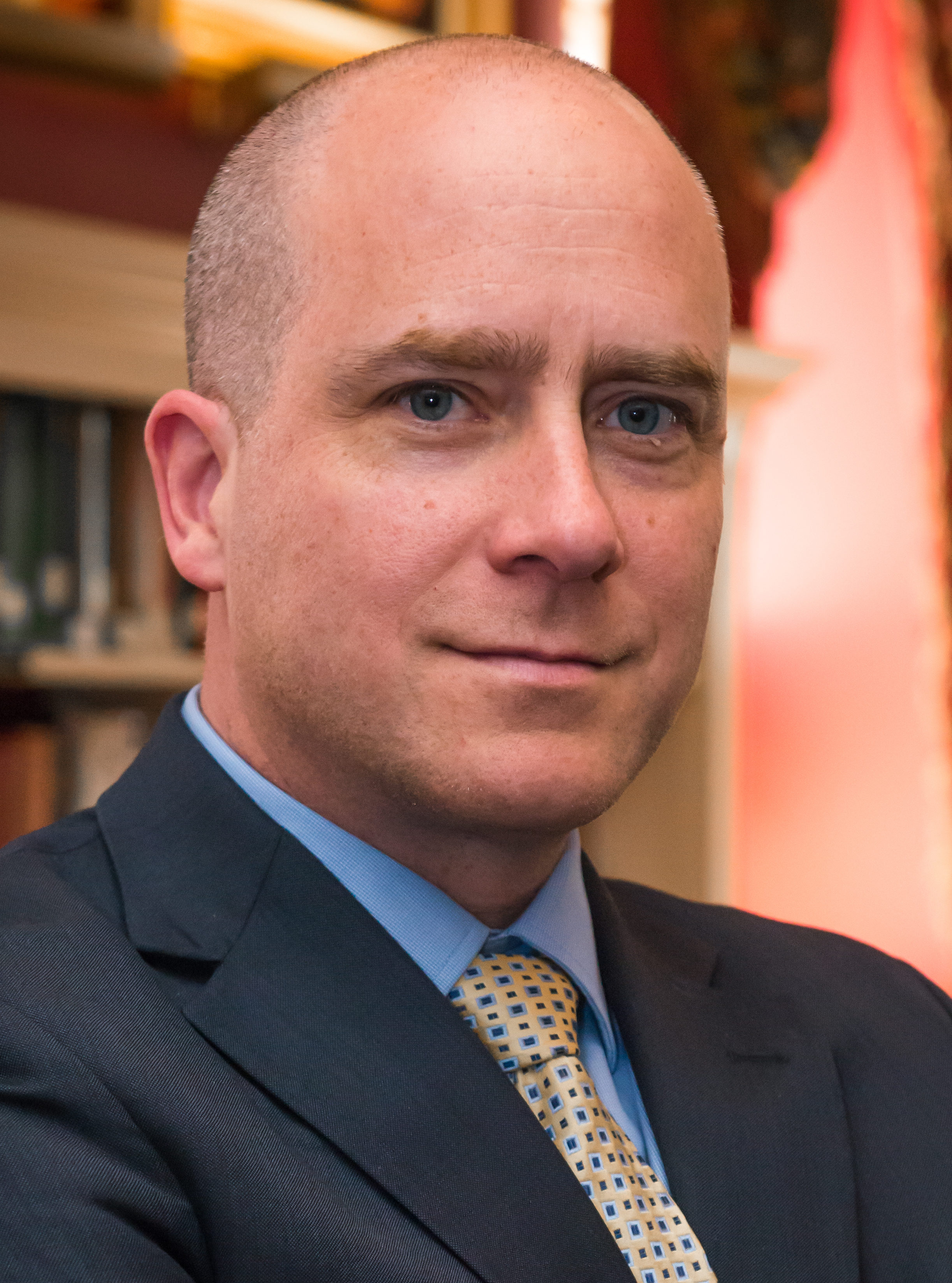
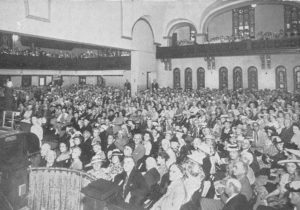

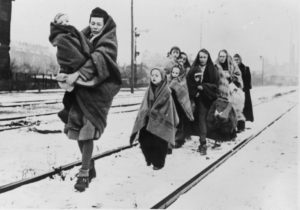
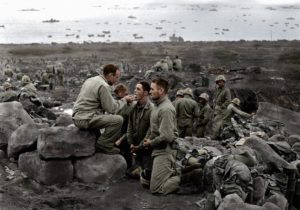
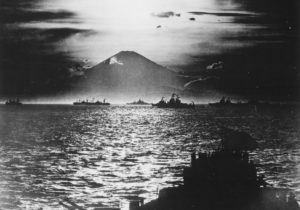

 Sponsor a student for Christianity & National Security 2024
Sponsor a student for Christianity & National Security 2024